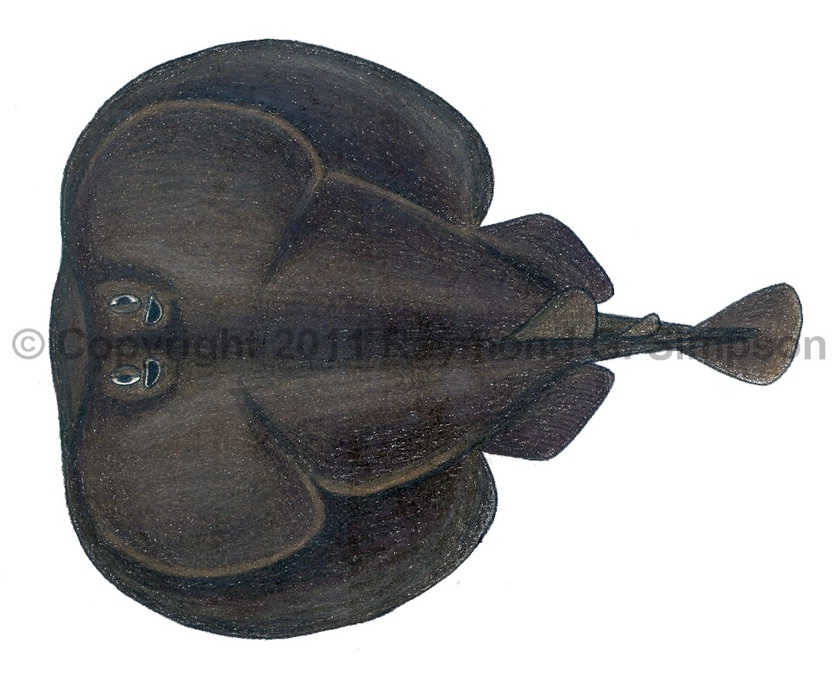
Common Name
Atlantic Torpedo
Year Described
Storer, 1843
Identification
A large species of electric ray. Disk almost round and thickened in cross-section. Snout not usually projecting. Eyes close to anterior margin. Eyes small and close together. Spiracles small and lacking papillae. Mouth with ~38-66 rows of teeth (more in adults). Electric organs visible as large lumps in the anterior portion of each pectoral fin. Tail short and stumpy. Pelvic fins rounded and project beyond rear disk to level of first dorsal fin. There are two dorsal fins positioned very near each other: the first being much larger than the second. Caudal fin truncate with rounded upper and lower lobes. Low skin folds on side of tail. Skin entirely smooth. Claspers in males thick and stumpy; reaching caudal fin base.
Color
Dorsum uniformly dark brown, blackish, or purplish-brown with no markings. Ventrum white with brownish edges to disk.
Size
Maximum size to over 154cm TL.
Habitat
A bottom living species found from shallow coastal waters to over 500m depth. Can deliver a strong electric shock.
Range
Recorded from Nova Scotia to Florida and the Gulf of Mexico, with scattered records south into the Caribbean to Venezuela.
References
Last, P.R., White, W.T., Carvalho, M.R. de, Séret, B., Stehmann, M.F.W & Naylor, G.J.P (Eds.). 2016. Rays of the World. CSIRO Publishing, Melbourne.
Other Notes
Last et al. (2016) splits the western Atlantic population as separate from Tetronarce nobiliana from the eastern Atlantic based on molecular data. More research needs to be done to separate the Atlantic Tetronarce based on morphology.